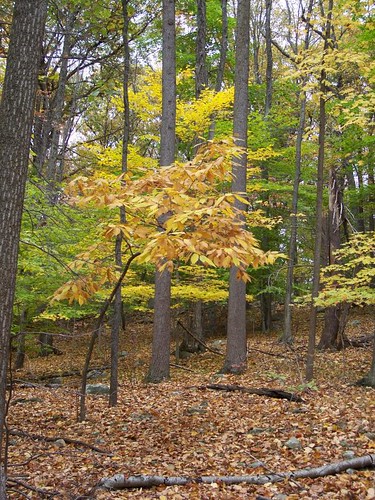
This post is part of the Science Tuesday feature series on the USDA blog. Check back each week as we showcase stories and news from USDA’s rich science and research portfolio. Today we learn more about how the National Institute of Food and Agriculture invests in and advances agricultural research, education and extension and seeks to make transformative discoveries that solve societal challenges.
Seventy years ago, when Nat “King” Cole first regaled us about roasted chestnuts in The Christmas Song, not many Americans could actually enjoy the treat because American chestnut trees were in dire straits.
The predominant tree in Eastern American forests was nearing the tail end of a 50-year blight that killed an astonishing three to five billion trees, making the species functionally extinct. Now, however, researchers supported by USDA’s National Institute of Food and Agriculture (NIFA) are working to restore the American chestnut and may be only a few years away from bringing back the iconic tree.
Chestnut restoration efforts have been ongoing since the 1980s without much success, but Dr. William Powell and his team at the State University of New York’s College of Environmental Science and Forestry recently turned a corner with the creation of an American chestnut variety that is resistant to the blight.
The result is a new transgenic variety of American chestnut that is resistant to the Cryphonectria parasitica, a fungus that was introduced to the United States around the turn of the 20th century when Chinese chestnut trees were imported. The fungal pathogen, to which Asian chestnuts are immune, infected American chestnuts with cankers that effectively choked off nutrient delivery to the tree’s branches and upper portions. As a result, America lost both a huge source of food for humans and animals alike and the economic value of its straight, fast-growing, rot-resistant wood.
“We used a ‘natural genetic engineer’ called Agrobacterium to move a wheat gene into the American chestnut,” Powell said. In the wild, Agrobacterium inserts genes into plants. The wheat gene Powell introduced produces a detoxifying enzyme that prevents the blight-causing fungus from killing the tree's cells and thereby stops canker expansion. “We’re giving the tree an ability to defend itself against the fungus,” he said.
Using the transgenic method versus traditional breeding means the new American chestnut will be more than 99.99 percent identical to the wild variety. Traditional breeding programs, on the other hand, would result in the alteration of thousands of genes.
NIFA has funded Powell’s research since 2003 with state experiment station funding as well as through its Biotechnology Risk Assessment Research Grant program. Powell has posted a YouTube video that shows how “original” and transgenic American chestnut seedlings react to the chestnut blight.
